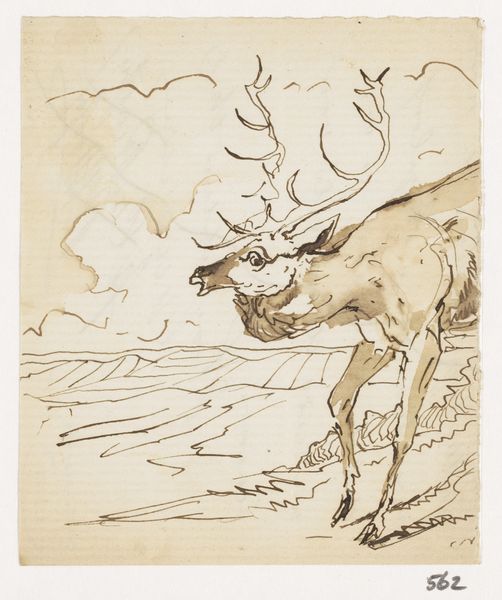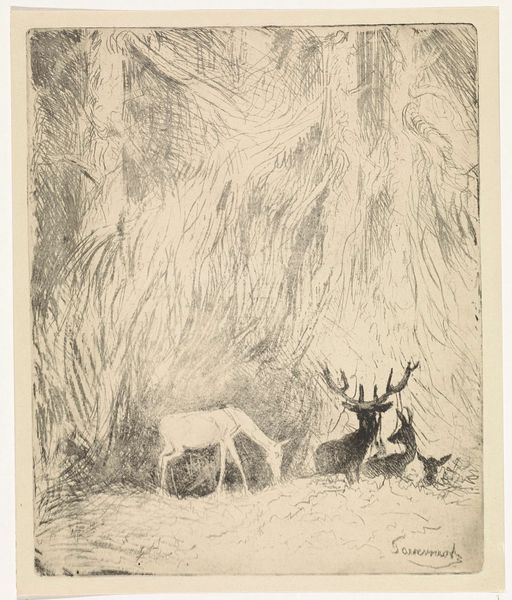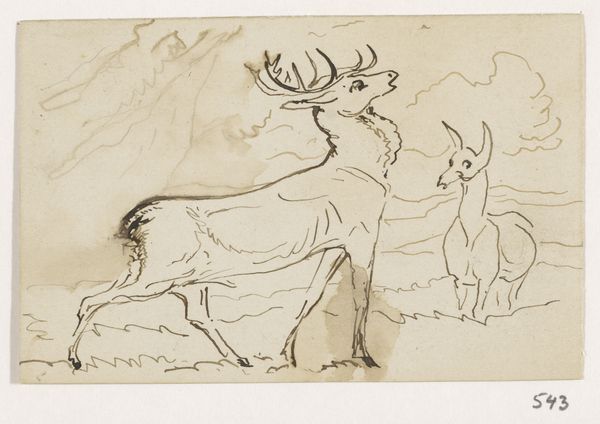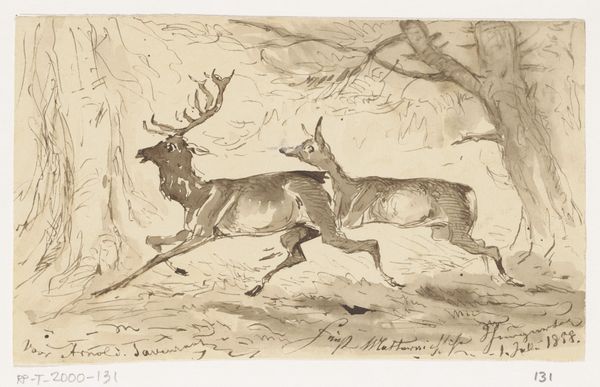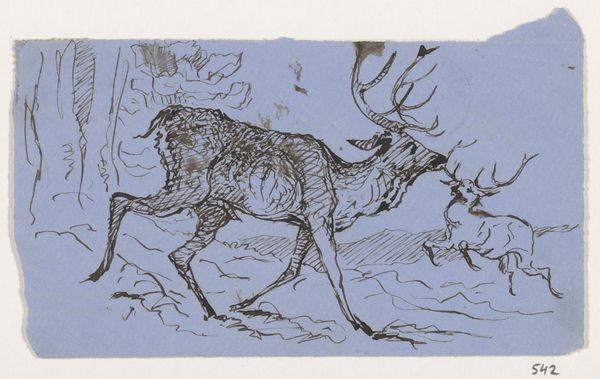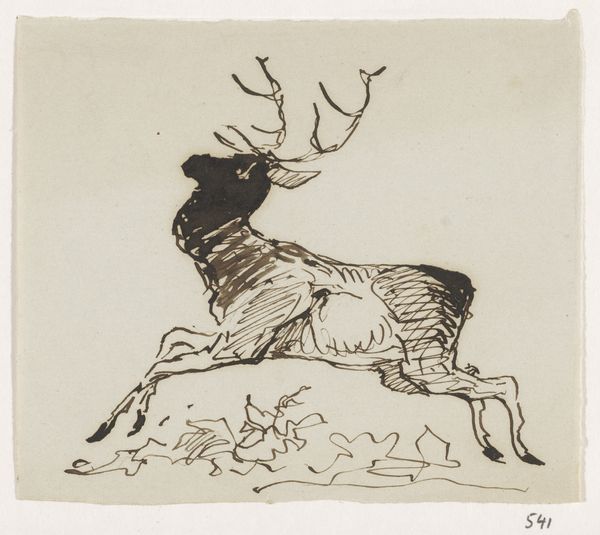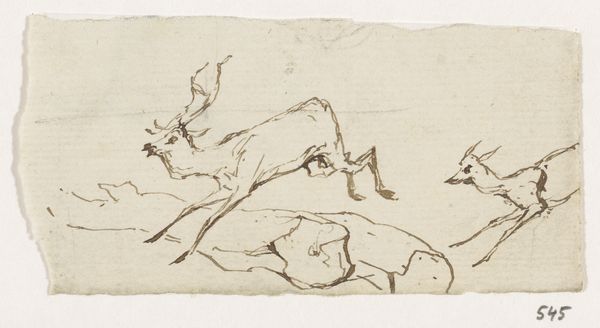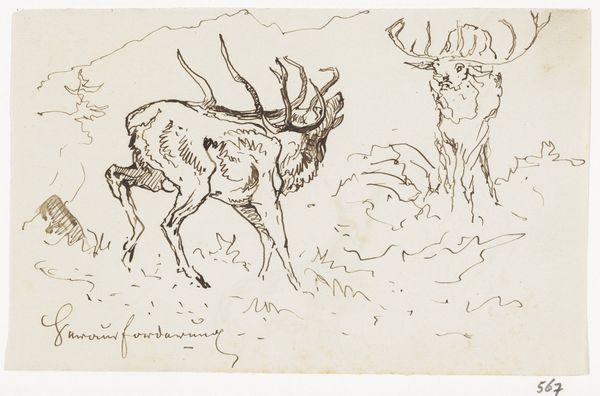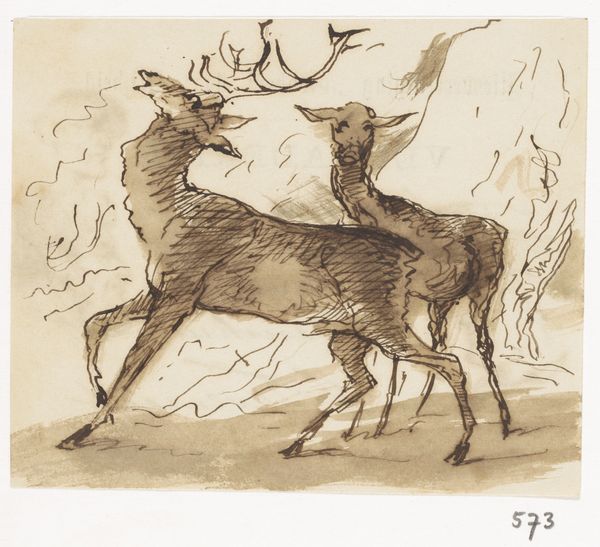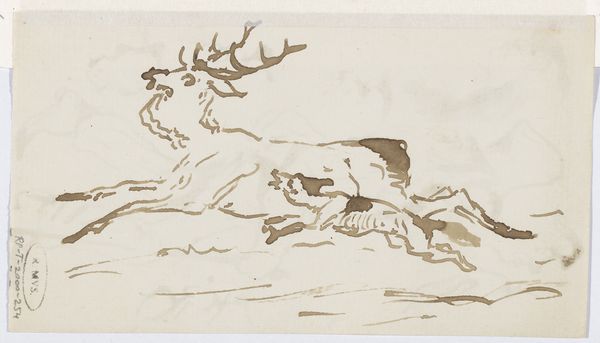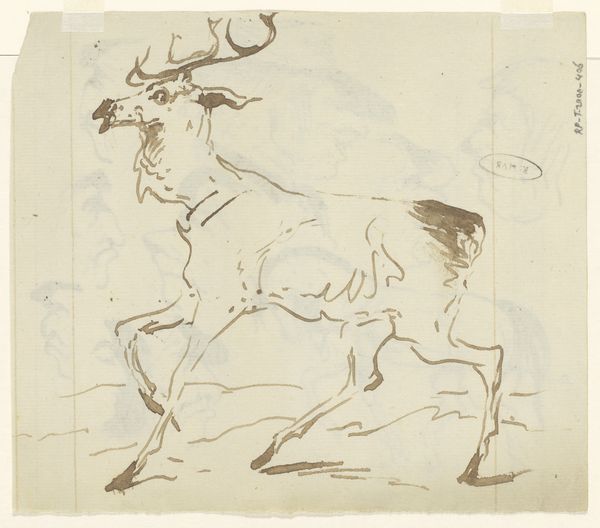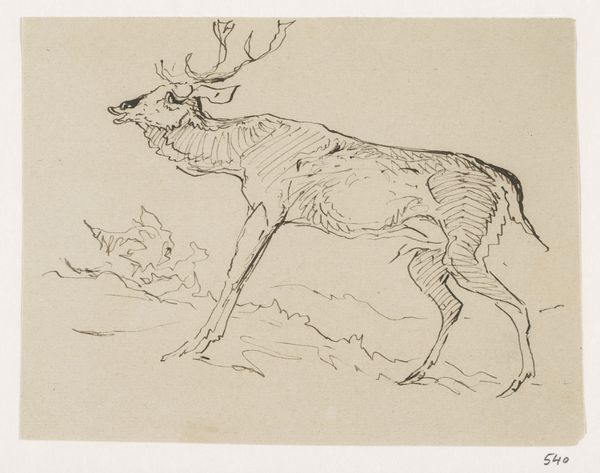
drawing, paper, ink
#
drawing
#
animal
#
landscape
#
paper
#
ink
#
realism
Dimensions: height 171 mm, width 138 mm
Copyright: Rijks Museum: Open Domain
Curator: Welcome. Here we see "Two Sketches of Deer" by Johannes Tavenraat, created between 1840 and 1880. It's a drawing in ink on paper. What are your initial thoughts? Editor: Well, I'm struck by the immediacy of the gesture, and it appears deceptively simple. There's a ruggedness, almost, in the stark lines, but the choice of medium seems particularly economical, cheap even. Was paper readily available at this time? Curator: I agree; there’s a palpable sense of immediacy. The quick strokes do much to evoke a broader history, recalling classical myths like that of Artemis or Actaeon. Deer have long symbolized vulnerability and the wild untamed spirit of nature. It gives me the sense of nature pushed into small domestic, almost forgotten spaces. Editor: That’s interesting. Thinking about materials, I'm wondering where Tavenraat sourced his ink and paper. The brown ink wash, I suspect, was readily available. Were such nature scenes particularly commissioned pieces? Because otherwise the relative "cheapness" of both paper and wash make this seem like accessible art for middle-class patrons. Or perhaps art purely for the sake of creating and honing one's technique? Curator: The recurring motif is potent. Across cultures, the stag embodies masculine power and regeneration, but simultaneously, these sketched lines capture a fragility, reminding me of humanity's impact on natural habitats through deforestation and hunting. Editor: A compelling paradox there. Considering that hunting was primarily the realm of the wealthy, perhaps the work inadvertently hints at the societal structures intertwined with natural exploitation. Curator: Perhaps. What is quite poignant is its understated message and lingering effect on us today. It bridges the past with a continued narrative on ecological consciousness. Editor: Yes, while simple in its construction, its exploration of nature's consumption persists in the present moment. Thanks for sharing. Curator: My pleasure. It’s been great looking at this piece with you!
Comments
No comments
Be the first to comment and join the conversation on the ultimate creative platform.

